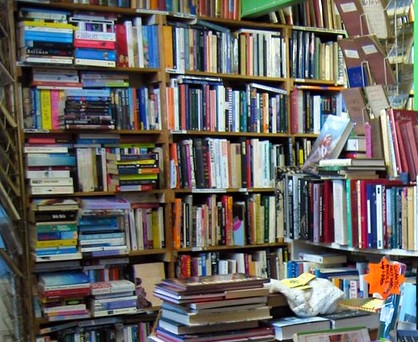Post
ARCHIVE | Build Your Own London Library
6 Apr 2020
Inaugurating an ongoing series of the best writing on London, past and present, London author and blogger Peter Watts selects some personal favourites from his bookshelves
This piece first appeared in issue 470 (Autumn/Winter 2016) of The Journal of The London Society.
Do give us your suggestions of favourite London books in the comments below.
- The London Encyclopaedia, by Ben Weinreb & Christopher Hibbert (Macmillan, 1983)
The definitive A-Z of London history, fascinating, authoritative and absorbing. I much prefer this to narrative histories like Roy Porter and Peter Ackroyd. The encyclopaedia is now in its third edition – I have a soft spot for the second edition, but that is needless nerdery.
- In Search of London, by HV Morton (Methuen, 1951, reprinted by Da Capo Press)
My single favourite piece of narrative London writing, featuring Morton wandering around the bomb-battered city in 1951, describing what he finds and remembering what it once looked like. Brilliant, time-travelling, London writing. Morton’s other London books are good, but this is the stand out.
- Shaping London: the patterns and forms that make the metropolis, by Terry Farrell (John Wiley, 2009)
A fascinating and very approachable look at the tangible forces – wealth, topography, infrastructure – that have shaped the infrastructure of London. A welcome antidote to the formless tediousness of so much contemporary psychogeography.
- The History of London in Maps, by Felix Barker & Peter Jackson (Barrie & Jenkins, 1990)
Excellent and accessible cartographical guide from 1993, divided into sensible sections and well illustrated. There are half-a-dozen excellent map books on my shelves, but this is probably the one I’d take to a desert island (although the recently reprinted London Bomb Maps is a stunner).
- London’s Lost Rivers, by Tom Bolton (Strange Attractor Press, 2011)
For decades, Nicholas Barton’s The Lost Rivers Of London was the undisputed canon leader in this rich niche of subterranea, but it was transplanted by Bolton’s brisk book, which doubles as a walking guide and has ghostly images by SF Said. For a more general read on subterranean London, “London Under London” by the perfectly named Richard Trench remains the stand-by despite much competition.
- Night Haunts, by Sukhdev Sandhu (Verso, 2007)
Sandhu explores the nocturnal economy of 21st century London. Arguably supplanted by Ben Judah’s eye-opening ‘This Is London’, although I think this is more elegantly styled and has a better focus. From a historic perspective, Jack London’s People Of The Abyss remains essential.
- Lost London: 1870–1945, by Philip Davies (Transatlantic Press, 2009)
A magnificent photographic survey of London’s lost buildings from the mid-Victorian era to the Second World War. Available in two versions, with images taken from English Heritage’s archives.
- Pleasures of London, by Felix Barker & Peter Jackson (London Topographical Society, 2008)
Wonderfully quirky account of how Londoners have entertained themselves over the years, dabbling in everything from bear baiting to musical mice. Contains some absolute gems from the Georgian and Victorian era that more than make up for the lack of steam as it enters the 20th century. For a more exhaustive account of London’s sporting venues through the centuries, get the extraordinary Played In London by Simon Inglis.
- London Peculiars, by Peter Ashley (English Heritage, 2004)
Bookshops groan with ‘secret London’-style books, but these two fairly straightforward volumes of hard-to-find urban oddities remain my favourite. See also the thorough Secret London: An Unusual Guide, the lovely recent Curiocity by Henry Eliot and Matt Lloyd-Rose, and the idiosyncratic The Absolutely Essential Guide To London by David Benedictus.
- London: the lives of the city, by various authors (Granta, 1999)
Granta’s London-themed issue from spring 1999 was probably the single volume that first turned me on to the concept of London writing.
It contains a series of essays about the city, including contributions by Helen Simpson, Will Self, John Lanchester, Hanif Kureishi, Ian Hamilton, Ian Buruma, Philip Hensher, Doris Lessing and Penelope Lively, plus photographs and a magnificent series of maps of ‘Literary London’ by Martin Rowson. I still await a repeat prescription.
Peter Watts is a London journalist, author and blogger. He is the author of Up In Smoke, the foiled dreams of Battersea Power Station. Read his writings on London at greatwen.com or follow him on Twitter @peter_watts
